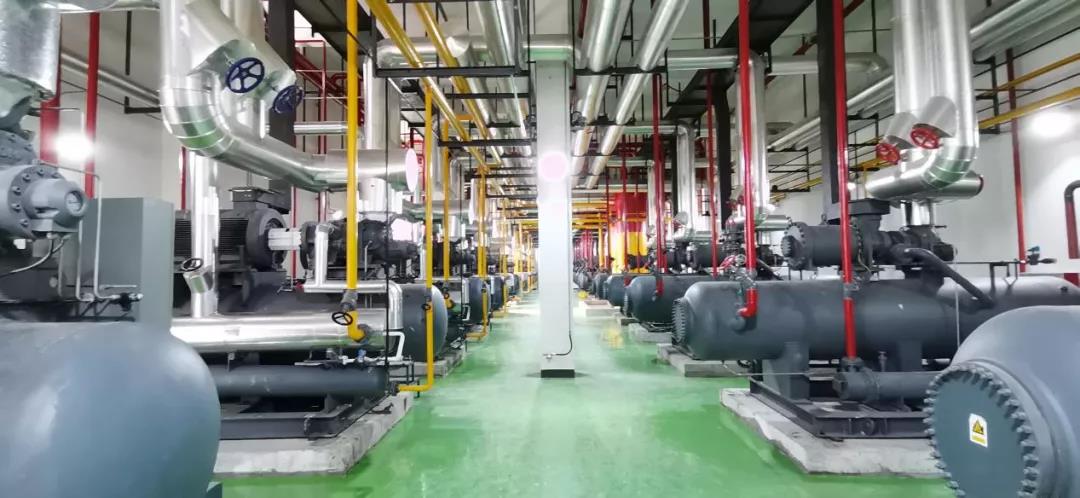The “Large Refrigerator” with a Storage Capacity of 227,000 Tons Starts Cooling (Picture)

As the largest single cold storage in China, the Southern Area adopts the refrigeration system flexibly according to actual application scenarios. The -23°C freezer room adopts the internationally advanced environment-friendly “NH₃+CO₂” cascade refrigeration; the 0°C cold storage room and hallway use ethylene glycol as the working fluid, which exchanges heat with -15°C ammonia in the plate heat exchanger, and then is conveyed to the ceiling fans on each floor through the primary and secondary pumps to achieve refrigeration of the cold storage room and hallway. To meet customers’ demands for diverse temperature zones, the Southern Area adopts advanced variable temperature technology to realize different temperature zones in different storages, monitors and manages the temperatures of the storages in real time through temperature and humidity probes, and firmly controls the key indicator of “temperature”.
As a key project and people’s livelihood project in Guangzhou, the cold chain project in the Southern Area of Nansha International Logistics Center covers an area of 208,000 square meters, and it is planned to build cold storages with a storage capacity of 460,000 tons. The total investment in the Phase I of the project is RMB1.96 billion, and 3 cold storages, 1 refrigerated container yard, 1 supporting building and one 80,000m2 external yard have been built. As a new business format of Guangzhou Port Group, the cold chain project in the Southern Area is actively preparing for the start-up operation while focusing on construction; meanwhile, its port opening and business expansion are steadily advancing. At present, the Southern Area has successfully obtained the approval of the General Administration of Customs for the establishment of designated supervision sites for imported meat, imported fruits and imported plant seedlings, and is advancing the application for the establishment of public bonded warehouses and centralized supervision warehouses for imported frozen food. (Hu Zhengjun, Shen Fenghua)
News
- Xinsha Company Saw A Year-on-year Increase of 10.55% in Cargo Throughput in the First Quarter (Picture)
- 24,188 TEUs! The world's largest container ship calls at Nansha Port Area of Guangzhou Port (Picture)
- “Nansha-Hengyang” Pulp Special Line Launched (Picture)
- Good Start and Good Progress! Nansha Phase III Production Hit a Good Result (Photo)
- The National Consumption Promotion Month & Guangdong Automobile Consumption Festival Kicks Off in Guangzhou Port (Picture)